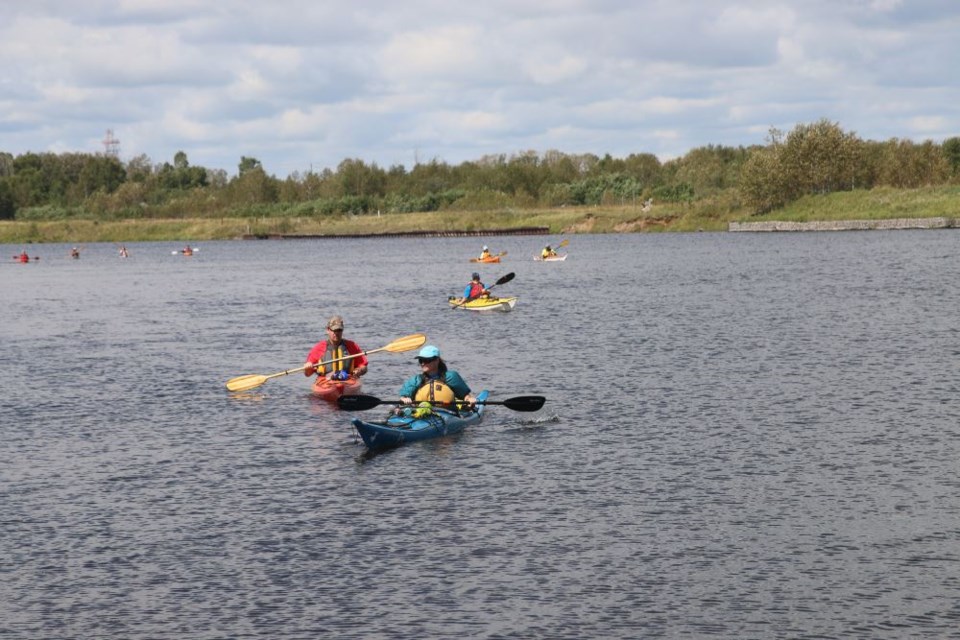THUNDER BAY – Kayakers recently toured Mission Island for a firsthand look at areas of concern with water quality in local waterways.
The Remedial Action Plan hosted a kayak tour on Sunday around the Mission Island Conservation Area that highlighted areas affected by industrial waste water and what the RAP is doing to improve water quality.
“We try to have events that bring the public closer to the actual locations that we are talking about to give them a sense of industry in the area and the scope of the problem,” said Kirsti Salmi, outreach and communications coordinator for the Lakehead University Remedial Actions Plan Office.
“Events like the kayak tour allow us to bring people a bit closer and show them the actual environmental impact that the industry and waste water is having.”
There were 13 kayakers on the tour on Sunday that was led by Remedial Action Plan coordinator, Jim Bailey.
The tour brought the kayakers to sites including the confined disposal site where dredging materials and contaminated sediments are placed.
Salmi explained that historically, Thunder Bay has had issues with waste water and sediment contamination along the shores of Lake Superior.
“For Thunder Bay, in large part it tends to be either improper waste water effluents coming from pulp and paper mills and it also comes from the sewage treatment plant,” she said.
“For the past three decades, the Remedial Action Plan has been working to improve the quality of the water coming from these industrial sites.”
The Remedial Action Plan Program began in 1987 and focusses on all the Great Lakes. Along the north shore there are four areas of focus that includes Thunder Bay, Nipigon Bay, Jackfish Bay, and Peninsula Harbour.
According to Salmi, the North Harbour project is a hot-button issue for the RAP.
“There is a lot of toxic material that is sitting in North Harbour right now, like mercury,” she said.
“Currently, the members of the public advisory committee are trying to figure out the best way to clean that up and see the project through.”
A main point of interest for the kayak tour on Sunday was the confined disposal site because it is one of the clean-up options for the North Harbour project.
“There is the possibility that the sediment can be dredged from North Harbor and brought over to the confided disposal site so it isn’t harmful to the lake,” Salmi said.
Salmi said that events like the kayak tour are a way for the general public to become involved in RAP projects and see the sites up close to get a better understanding of the work that that has been done and the work that still needs to be done.
“The tour is for anybody who hasn’t been involved in any of the RAP based initiatives just so they have a sense of the history of the problems and where we are going forward,” she said.
